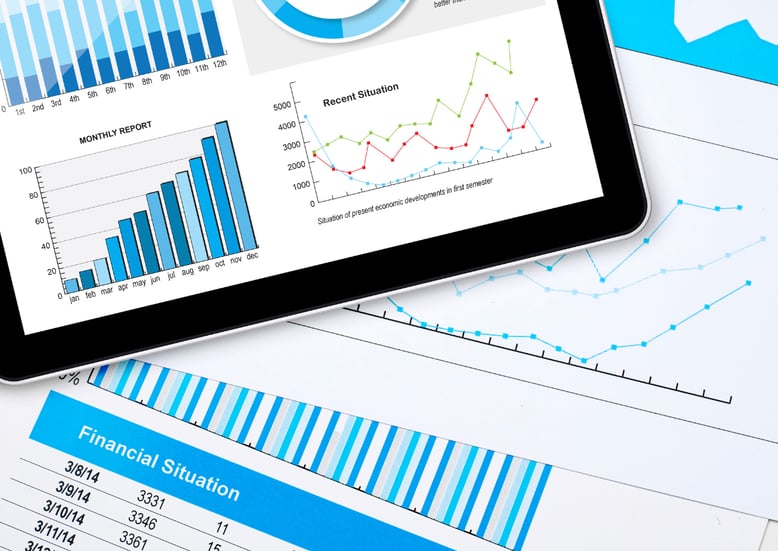Key Takeaways
- Enhanced Financial Transparency: ASC 842 mandates that all leases be recognized on the balance sheet, significantly increasing the transparency of a company's financial obligations and providing a more accurate picture of financial health.
- Consistency and Comparability: The standard ensures a consistent approach to lease accounting across entities, facilitating easier comparison of financial statements and providing a fuller view of an organization's leasing activities.
- Streamlined Lease Accounting with NetLease for NetSuite: For organizations aiming to comply with ASC 842, NetLease for NetSuite offers a robust solution that simplifies lease management. This tool integrates seamlessly with financial systems, providing automated lease tracking, robust reporting, and scalable architecture to support business growth.
As accountants, we know the importance of staying up to date with the latest accounting regulations and standards. One such standard that has significantly impacted lease accounting is ASC 842. This article provides a practical overview of the ASC 842 standard and its implications for your accounting processes. We'll break down the essentials of lease classification, recognition, and measurement, and demonstrate how Netgain’s solutions can help you comply with these new requirements efficiently.
With Netgain, you can simplify the complexities of ASC 842 and automate your lease accounting tasks to focus on what you do best—running your business.
What Is ASC 842?
ASC 842, also known as the Accounting Standards Codification Topic 842, is a newer lease accounting standard issued by the Financial Accounting Standards Board (FASB). It replaces the previous leasing standard, ASC 840, and aims to improve financial reporting of leasing transactions. ASC 842 requires organizations to recognize lease assets and lease liabilities on the balance sheet and to disclose key information about leasing arrangements.1
Unlock The Future Of Finance And Accounting With NetgainExplore the possibilities with Netgain, where innovation meets compliance. Our products are designed to empower smart accountants like you by simplifying and automating complex processes, ensuring you can focus on what truly matters - financial success. Key Features and Benefits:
NetLease for Netsuite streamlines lease management for businesses, simplifying compliance and automating lease-related processes. This empowers accountants to effortlessly tackle lease tasks right within the NetSuite platform. Contact us for a personalized demo today. |
Objectives of ASC 842 Standards
The main objectives of ASC 842 are to:
- Increase Transparency: By bringing most leases onto the balance sheet, ASC 842 enhances the transparency of an organization's financial commitments.
- Improve Comparability: The standard provides a more faithful representation of an organization's leasing activities, making it easier to compare financial statements across entities.
- Provide a Fuller Financial Picture: It ensures that users of financial statements have a complete view of the organization's leasing obligations.
Scope Of ASC 842 Standards
ASC 842 applies to both lessees and lessors and covers almost all leasing arrangements, including real estate leases, equipment leases, and even certain service contracts with embedded leases.2 It clarifies what qualifies as a lease and provides guidelines on how to account for leases accurately. The standards ensure consistency and transparency across different industries and organizations.

Key Changes In Lease Accounting
ASC 842 introduces significant changes compared to the previous lease accounting standard, ASC 840.3 The notable changes include:
Recognition Of All Leases On The Balance Sheet
Under ASC 842, lessees must recognize both finance leases and operating leases as assets and liabilities on the balance sheet.
Increased Lease Disclosures
The new standard requires enhanced disclosures related to lease terms, lease payments, and any variable lease payments.
Present Value Calculations
ASC 842 requires accountants to calculate the present value of lease payments and record them as lease liabilities.
Impacts On Financial Ratios
Recognizing lease liabilities on the balance sheet may affect financial ratios and key performance indicators (KPIs) used for analysis and decision-making.
ASC 842 Compliance Checklist
To ensure compliance with ASC 842, consider the following checklist:
- Identify all lease contracts within your organization.
- Evaluate and classify leases as finance or operating leases.
- Calculate the present value of lease payments and record them as lease liabilities.
- Recognize the right-of-use (ROU) assets on the balance sheet.
- Implement appropriate lease accounting software or systems to streamline lease management and reporting.
- Establish robust processes and controls to maintain accurate lease data.
- Provide enhanced lease disclosures as mandated by ASC 842.
Software For ASC 842 Lease Accounting
When transitioning to ASC 842 Lease Accounting, selecting the right software for your organization is essential. The best software for ASC 842 Lease Accounting should include features such as:
- Automated Lease Management: Automated lease management can help streamline the transition process and ensure accuracy and compliance.
- Reporting: Robust reporting capabilities are essential for understanding and tracking the impact of the new standards.
- Integration Capabilities: Integration capabilities are key to ensuring accuracy and compliance. The software should be able to integrate with other systems such as ERP, accounting, and financial systems to ensure data accuracy and consistency.
- Security And Scalability: Security and scalability are important considerations when selecting a software solution. The software should have strong security measures in place to protect your data, and should be able to scale as your organization grows.
For a software that encompasses these essential features, consider NetLease for NetSuite. This comprehensive tool is designed to tackle the challenges of ASC 842, offering a seamless integration into your financial systems, robust data protection, and the flexibility to scale with your business.
With NetLease for NetSuite, you can ensure a smooth transition to ASC 842 compliance, backed by the reliability and support of Netgain's expertise!
What Does ASC 842 Do For Your Financial Reporting?
Implementing ASC 842 brings numerous benefits for accountants, including:
- Increased Transparency: By bringing all leases onto the balance sheet, ASC 842 provides a more accurate representation of a company's financial health.
- Better Decision-Making: Having a comprehensive view of lease obligations helps accountants make informed decisions regarding lease renewals, expansions, or terminations.
- Enhanced Risk Management: Identifying lease obligations allows accountants to proactively manage and mitigate risks associated with lease agreements.
- Improved Financial Reporting: ASC 842 helps accountants generate more accurate and reliable financial statements, enhancing credibility with stakeholders.
- Streamlined Audits: With leases appropriately recorded on the balance sheet, audits become more efficient and less prone to errors or omissions.
Ready to transition to the ASC 842 Lease Accounting standard? Download our free ASC 842 Transition Guide for a rigorous audit with high customer satisfaction!

Future Trends In Lease Accounting
Looking ahead, we can expect the following trends in lease accounting:
- Increased automation: As technology advances, lease accounting software solutions will continue to evolve, automating manual tasks and improving efficiency.
- Enhanced lease data management: Organizations will focus on implementing robust systems and processes for managing lease data to ensure accuracy, compliance, and easy retrieval.
- Ongoing regulatory changes: Lease accounting standards may undergo further updates or refinements to address emerging challenges and align with changes in the business landscape.
- Integration with other accounting standards: Lease accounting will be further integrated with other accounting standards, enabling a more holistic approach to financial reporting.
Final Thoughts On ASC 842
ASC 842 is a significant lease accounting standard that brings transparency, accuracy, and consistency to financial reporting, providing a clearer picture of a company's financial health. By adhering to ASC 842, companies can improve decision-making, manage risks effectively, and enhance overall financial statement credibility.
At Netgain, we understand the complexities of lease accounting and the importance of compliance. Our product suite focuses on creating solutions that simplify and automate compliance, finance, and accounting challenges. With our lease accounting software, companies can seamlessly navigate ASC 842, ensuring compliance while emphasizing controls and auditability.
At this point, you likely grasp the alterations made by the new lease accounting standards. Discover how NetLease addresses the increased intricacies of lease accounting with a straightforward yet robust solution.
Frequently Asked Questions About ASC 842
What types of leases are covered under ASC 842?
ASC 842 encompasses all types of leases, including real estate, equipment, and other assets. It does not differentiate between different lease categories.
Are there exceptions or exemptions under ASC 842?
ASC 842 provides practical exemptions for short-term leases (leases with a term of 12 months or less) and leases of low-value assets. These exemptions allow simplified accounting treatment.
How does ASC 842 change the accounting treatment of leases?
ASC 842 fundamentally alters the accounting treatment of leases by requiring lessees to recognize lease liabilities and right-of-use assets on their balance sheets. This change aims to provide a more accurate depiction of a company's financial health by bringing leases previously kept off-balance sheet into the spotlight.
Who is affected by ASC 842, and which organizations need to comply?
ASC 842 applies to both lessees (entities that lease assets) and lessors (entities that lease out assets). Virtually all industries and sectors are impacted by this standard. Private and public companies, non-profit organizations, and government entities that engage in lease transactions must comply with ASC 842.
What are the key challenges in implementing ASC 842?
Implementing ASC 842 can pose challenges, including the need for comprehensive lease data collection, adjusting accounting systems and processes, and ensuring compliance with the new disclosure requirements. Proper software and training are often required to meet these challenges effectively.
How can accounting software assist in ASC 842 compliance?
Accounting software can streamline the compliance process by helping organizations track lease contracts, calculate present values, generate financial disclosures, and manage ongoing lease administration. Specialized lease accounting software solutions are available to simplify compliance.
Are there any industry-specific considerations under ASC 842?
Yes, ASC 842 may have industry-specific nuances that can affect the way lease accounting is implemented. Certain industries, such as retail, may have unique lease terms or arrangements that require special attention in compliance with the standard.
How often does ASC 842 require a reassessment of lease contracts?
ASC 842 mandates that lessees regularly reassess lease contracts. If there are changes in lease terms or conditions, these need to be accounted for and reflected in the financial statements.
What are the implications of non-compliance with ASC 842?
Non-compliance with ASC 842 can have serious consequences, including misrepresentation of financial statements, potential legal issues, and damage to an organization's reputation. It's crucial for organizations to adhere to the standard to maintain financial integrity and transparency.
What criteria define a short-term lease under ASC 842?
A lease is considered short-term under ASC 842 if its term is 12 months or less and does not include a purchase option that the lessee is reasonably certain to exercise.
Sources:
- Weidner, D. J. (2017). New FASB Rules on Accounting for Leases: A Sarbanes-Oxley Promise Delivered. The Business Lawyer, 72(2), 367–404. https://www.jstor.org/stable/26419131
- Gibson, Y. S. (2021). The New Lease Accounting Standards (Topic 842): An Empirical Analysis of Its Impacts on Key Financial Performance Metrics. Doctoral Dissertations and Projects. https://digitalcommons.liberty.edu/doctoral/3143/
- Cheng, C., Geng, Y., & Zhao, S. (2022). Operating Leases and the Market’s Assessment of Equity Risk: Evidence from the Adoption of ASC 842. https://business.columbia.edu/sites/default/files-efs/imce-uploads/ADP/Agnes%20Cheng%20Geng%20Zhao%20202209.pdf
